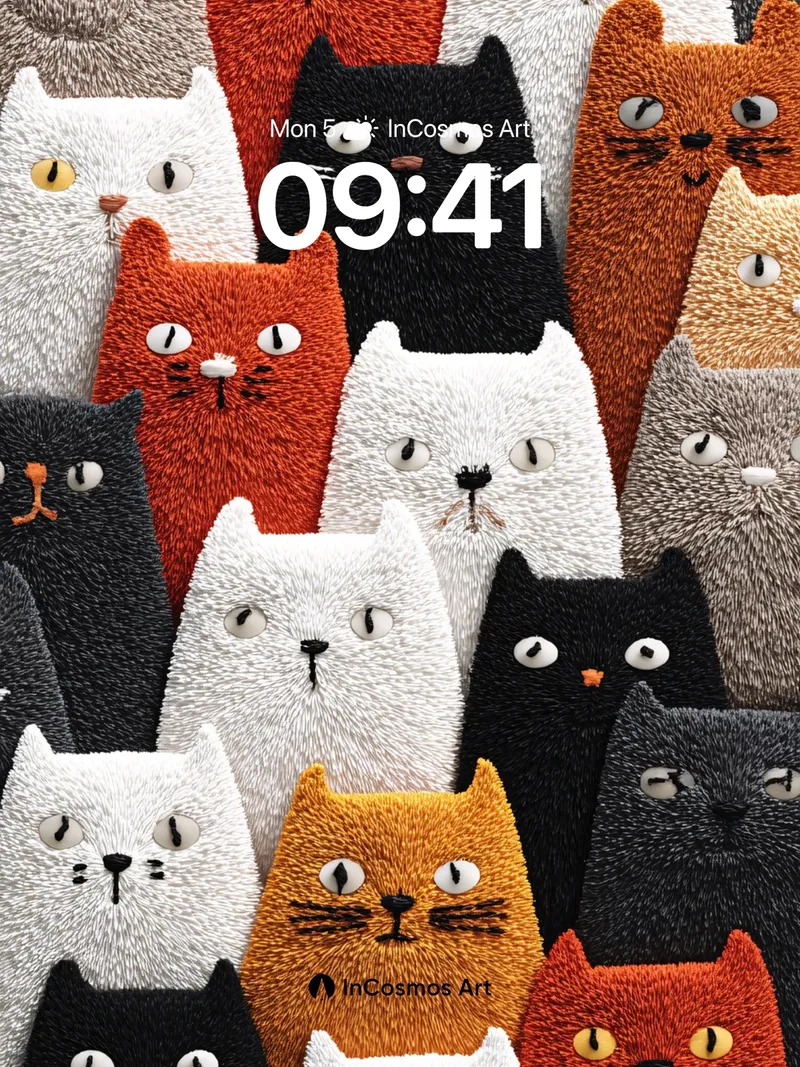In the interstices of human daily life, cats occupy a position that cannot be ignored. Their presence does not rely on words, yet through gaze, posture, and color, they form a silent dialogue. These diverse feline figures are both decorative symbols and emotional vessels. Arranged in repetitive patterns, they create visual rhythms that seem to narrate subtle tensions between belonging, individuality, and collectivity. When countless cats are placed together, individual identities dissolve, replaced by a chaotic beauty within order.
The Collectivity of Cats
Cats do not exist in isolation. They appear in dense formations, overlapping and intersecting, forming a visually compelling and slightly oppressive structure. This arrangement suggests the state of individual coexistence in modern society—both independent and interdependent. Each cat possesses unique color and expression, but when gathered, individuality fades, giving way to a unified collective consciousness. This phenomenon reflects contemporary desires for community and anxieties about identity.
The Psychology of Color
From warm oranges and whites to cool teal and blue-green tones, and high-saturation rainbow compositions, color becomes a core medium of emotional expression. Warm hues evoke intimacy and warmth, while cool ones bring distance and mystery. In some compositions, stark black-and-white contrasts emphasize philosophical duality—light versus dark, existence versus void. Color is not merely decoration; it serves as a vessel for psychological projection.
The Boundary Between Texture and Abstraction
Some works retain tactile details of fur, allowing viewers to almost feel their softness; others completely detach from reality, moving toward geometric abstraction. This transition from representational to abstract reflects an evolution in artistic expression—from realism to symbolism. Fuzzy textures imbue cats with lifelike qualities, while flattened forms elevate them into cultural icons, fragments of collective memory.
The Silent Gaze
All cats stare directly forward, without deviation or avoidance. This uniform gaze creates a powerful sense of interaction, as if the viewer is being collectively observed. This 'reverse gaze' disrupts traditional viewing dynamics, placing the observer in the role of the observed. It challenges power structures of agency and passivity, prompting reflection on self-perception.
























